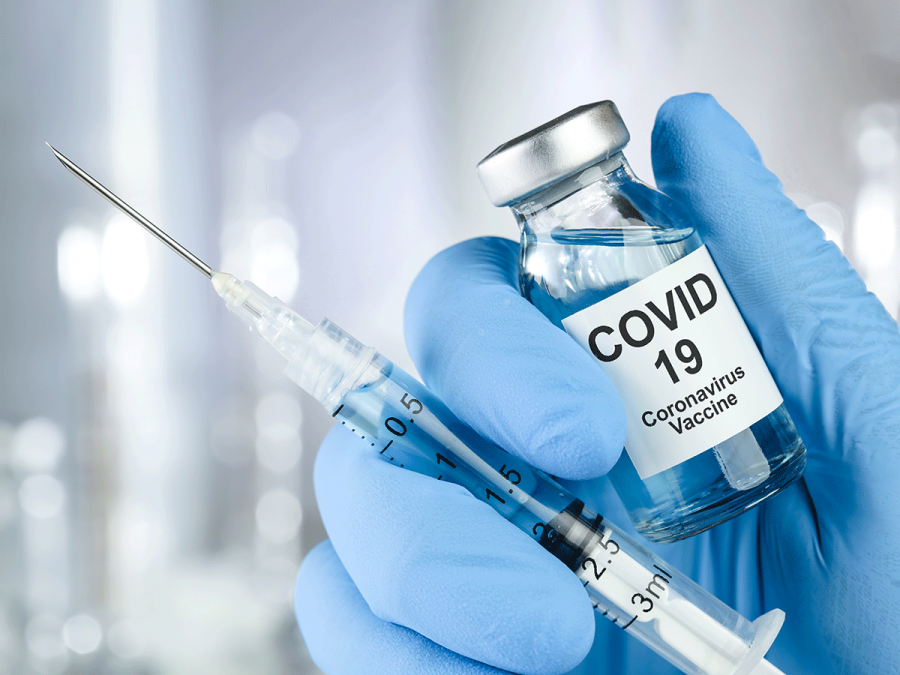COVID-19 Vaccines: Explanation and Statistics
The COVID-19 virus was first identified as a new virus in December 2020. SARS-CoV-2, the virus that causes COVID-19, is a single-stranded RNA coronavirus with spikes on the surface. As a highly infectious virus, it spread across cities and countries and soon created a global pandemic. According to Johns Hopkins University, this newly discovered coronavirus has caused 119.8 million confirmed cases and 2.6 million deaths worldwide as of March 15, 2021. Due to the COVID-19 outbreak, people’s daily lives have been severely affected: during the pandemic, hundreds of millions of people were asked to be quarantined at home following the restrictions on social distancing.
The purpose of social distancing is to reduce the risk of virus transmission by limiting contact between people, but it has its drawbacks. On the COVID-19 page of the IMF official website, the International Monetary Fund described the economic impact of lockdown as “the worst recession since the Great Depression.” To reduce the growth of virus cases and prevent increasing deaths, vaccines are being developed to build up antibodies in the human immune system that protect people from infections. When enough people are vaccinated, “herd immunity” can be achieved. Vaccinated citizens will allow a country to completely lift the COVID-19 restrictions and reopen its economy while residents are safe to contact and work in person.
There are already several countries in the world that have acquired the technology to develop vaccines, including the United States, China, Russia, Germany, and the United Kingdom. Based on the Coronavirus Vaccine Tracker posted on The New York Times, as of March 18, 2021, there are 78 vaccines in the process of clinical trials testing and nine leading vaccines, seven of which have been approved for full use. Most of the leading vaccines have been introduced in other countries as well, either as approved vaccines or for emergency use. In fact, within the current seven vaccines that have been given full approval by regulators, the Oxford-AstraZeneca vaccine, developed by the United Kingdom’s University of Oxford and British-Swedish company AstraZeneca, is the most widely used as it is currently supplied to 85 countries as of March 19, 2021.
The United States has developed and applied the use of three authorized vaccines at present: Pfizer-BioNTech, Moderna, and Johnson & Johnson. All of the three vaccines are also used outside the United States, especially the Pfizer-BioNTech vaccine, which is used by the second largest number of countries. Data posted on the CDC website shows that as of March 19, 2021, more than 118 million vaccine doses have been administered in the U.S. and about 42 million people are fully vaccinated. Moreover, corresponding to its large amount of administration in the world among the three vaccines, the Pfizer-BioNTech vaccine is the most used in the country, while the Moderna vaccine is the second most used and the Johnson & Johnson vaccine is the least used.
What are the differences between the three vaccines? First, the required number of shots is different. Only one dose is required for the Johnson & Johnson vaccine while two doses are needed for both the Pfizer-BioNTech vaccine and the Moderna vaccine. In addition, the three vaccines are in two different types: mRNA vaccine and Viral vector vaccine. The Pfizer-BioNTech vaccine, which is also known as Comirnaty, and the Moderna vaccine, which is also called mRNA-1273, are both mRNA vaccines. The mRNA vaccine can lead cells to create a piece of the coronavirus spike protein. After that, the piece of protein can trigger the immune system and train it to create antibodies to defend against the coronavirus. Different from the other two vaccines, the J&J vaccine is a type of viral vector. The viral vector is also created to strengthen the human immune system, but unlike the mRNA vaccine, it contains a real, modified, harmless virus.
Comparing the two types of vaccines, the two mRNA vaccines have better efficacy rates. In an article published in The New York Times in November 2020, the companies of the Pfizer-BioNTech vaccine announced that their vaccine was 95 percent effective on the clinical trial, and another The New York Times article wrote that the Moderna vaccine was declared to have a 94.5 percent efficacy rate. On the contrary, the J&J vaccine testing was proved to be 72 percent effective in the United States and 57 percent effective in South Africa, which are both lower rates than the Pfizer-BioNTech vaccine and the Moderna vaccine.
Side effects may occur with the injection of the COVID-19 vaccine. People may experience pain or soreness on the arm they take the shot, and there is a possibility to have uncomfortable feelings on the other parts of the body as well. For instance, headache, tiredness, fever, nausea, and muscle pain are common side effects of the COVID-19 vaccines that can take a toll on people’s bodies.
Even though there are known side effects of the vaccines, people’s trust in the COVID-19 vaccines has been growing globally. From November 2020 to mid-January 2021, a research study led by the Imperial College London surveyed around 13,500 people from 15 countries on their attitudes towards COVID-19 vaccines. The results of the survey showed 47 percent of participants saying they agree or strongly agree that they are “worried about the potential side effects” of taking COVID-19 vaccines. Since the beginning of the study in November 2020, the percentage of participants who are “worried about side effects” has decreased in three fifths of the countries that were polled. Like the Imperial College London highlighted in their research report, “two thirds (66%) of respondents report a strong or moderate trust in COVID-19 vaccines” when there were only 12 percent of respondents in the world who do not trust the COVID-19 vaccine at all.
Since there are not enough COVID vaccines at present, the current vaccination is not open to everybody. However, if the number of vaccines in the future is sufficient, should countries make the COVID vaccine mandatory for the benefits of herd immunity?

Hi, my name is Yili Bai. I am a senior at SSFS, and it is my third year as a staff writer in Wildezine. I love writing things to record my thoughts and...





